These documents consist of letters, telegrams, and postcards from Mina Miller Edison to her youngest son, Theodore. Half of the twenty-two letters date from April-May 1923 and were written during the last semester of Theodore's senior year at the Massachusetts Institute of Technology (MIT). Also included are nine letters from July-August, sent to Theodore while he was vacationing in Alaska. In addition, there is one letter from October written while Mina was attending a Daughters of the American (DAR) meeting in Washington, D.C., and one letter from December. Both of these letters are addressed to 264 Newbury Street in Boston, where Theodore returned in the fall of 1923 to pursue graduate studies at MIT. The notation "Save" in Theodore's handwriting appears on most of the envelopes.
Eight of the letters were written while the Edisons were vacationing at Seminole Lodge, their winter home in Fort Myers, Florida. Thomas Edison was ill during the entire period, and the letters contain discussions of the nature of his illness (stomach pains and a tingling sensation in his fingers, apparently brought about by diabetes), his efforts to treat it by fasting, his apparent recovery, and his subsequent relapse after he resumed eating. A letter from April 9 makes a comparison between Edison's draconian diet and the massive layoffs at his company in 1920-1921 —"perhaps it was the only way to save the business but it has been death on human beings."
Also included are comments about Dr. Arthur P. Hunter, the Fort Myers physician who tested Edison's sugar level; Mina's interest in bringing in a specialist from Tampa recommended by their property manager, Ben Tinstman; her concern that Edison's diabetic condition might develop into pneumonia; and the impact of his illness on their plans to return to New Jersey (they departed on May 2, almost two weeks later than originally planned). In addition, there are references to other visitors at Seminole Lodge—Edith Edison Potter, Thomas's recently widowed first cousin, and Teddy and Jack Sloane (the "darling little boys") who accompanied their grandparents to Florida while Madeleine Edison Sloane remained in New Jersey to give birth to her third child.
The three letters written immediately after Mina's return to New Jersey discuss the impact of Thomas's lingering illness on her longstanding plans to spend the summer traveling in Alaska with Theodore. Included are several references to her unsuccessful efforts to persuade Thomas to accompany them as far as California, which would lessen her time away from him. Also discussed in these letters are Theodore's impending graduation from MIT, his concerns that he would not complete his thesis in time, Mina's plans to travel with Thomas by automobile to Cambridge to attend the graduation, and Theodore's role as an usher at the upcoming wedding of his classmate, Jonathan Brown, III. Included in one of the letters is a clipping from the South Bend Tribune containing the results of a poll of young people in which Edison topped the list as the "greatest man" (although first among the boys by an almost 2-1 margin over second-place Woodrow Wilson, the inventor placed only fourth among the girls, behind Wilson, British Prime Minister David Lloyd George, and Austrian violinist Friz Kreisler).
The nine letters from July and August were all written while Theodore was on his trip to Alaska. Among the topics discussed in the letters are Mina's regret that she could not accompany her son, her belief that her decision to remain with her recuperating husband was the right thing to do, and the possibility of meeting Theodore in California to view the solar eclipse (probably the total solar eclipse of September 10, 1923, which was visible in those parts of California south of Oceanside and Santa Barbara). There are also several references to President Warren G. Harding, who was traveling the same route in Alaska in advance of Theodo
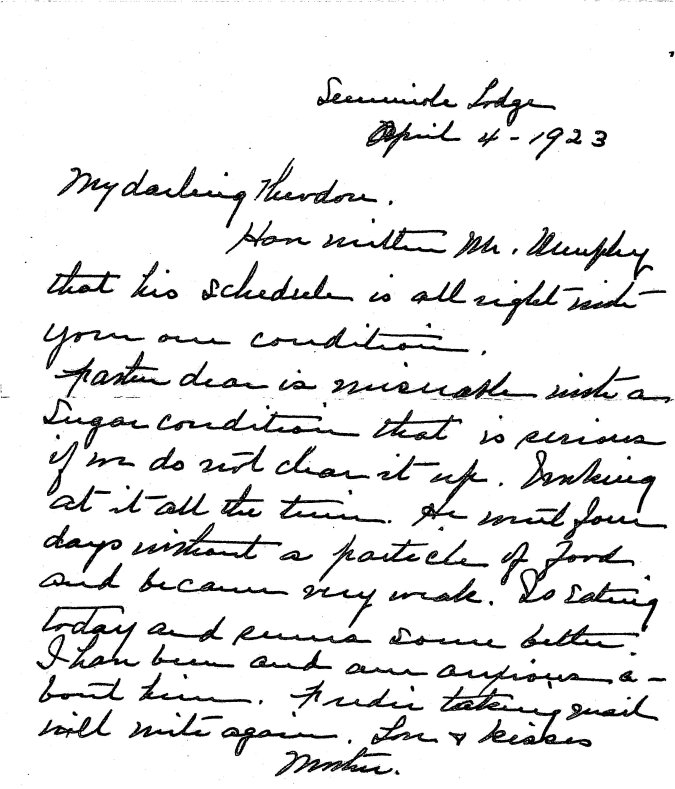 [X455LA], Letter from Mina Miller (Mrs Thomas A.) Edison to Theodore Miller Edison, April 4th, 1923 1923-04-04
[X455LA], Letter from Mina Miller (Mrs Thomas A.) Edison to Theodore Miller Edison, April 4th, 1923 1923-04-04 [X455LB], Telegram from Mina Miller (Mrs Thomas A.) Edison to Theodore Miller Edison, April 9th, 1923 1923-04-09
[X455LB], Telegram from Mina Miller (Mrs Thomas A.) Edison to Theodore Miller Edison, April 9th, 1923 1923-04-09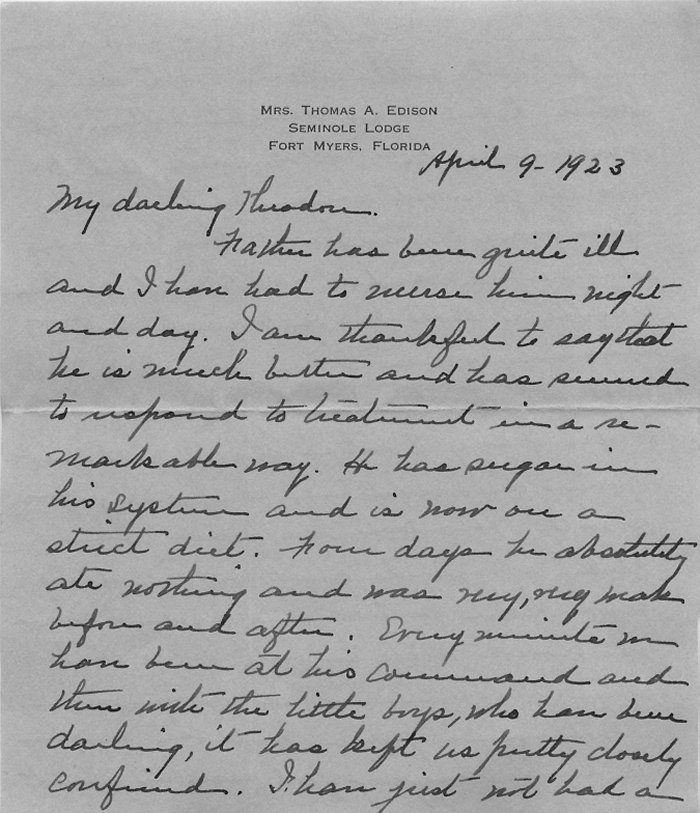 [X455LC], Letter from Mina Miller (Mrs Thomas A.) Edison to Theodore Miller Edison, April 9th, 1923 1923-04-09
[X455LC], Letter from Mina Miller (Mrs Thomas A.) Edison to Theodore Miller Edison, April 9th, 1923 1923-04-09 [X455LD], Letter from Mina Miller (Mrs Thomas A.) Edison to Theodore Miller Edison, April 10th, 1923 1923-04-10
[X455LD], Letter from Mina Miller (Mrs Thomas A.) Edison to Theodore Miller Edison, April 10th, 1923 1923-04-10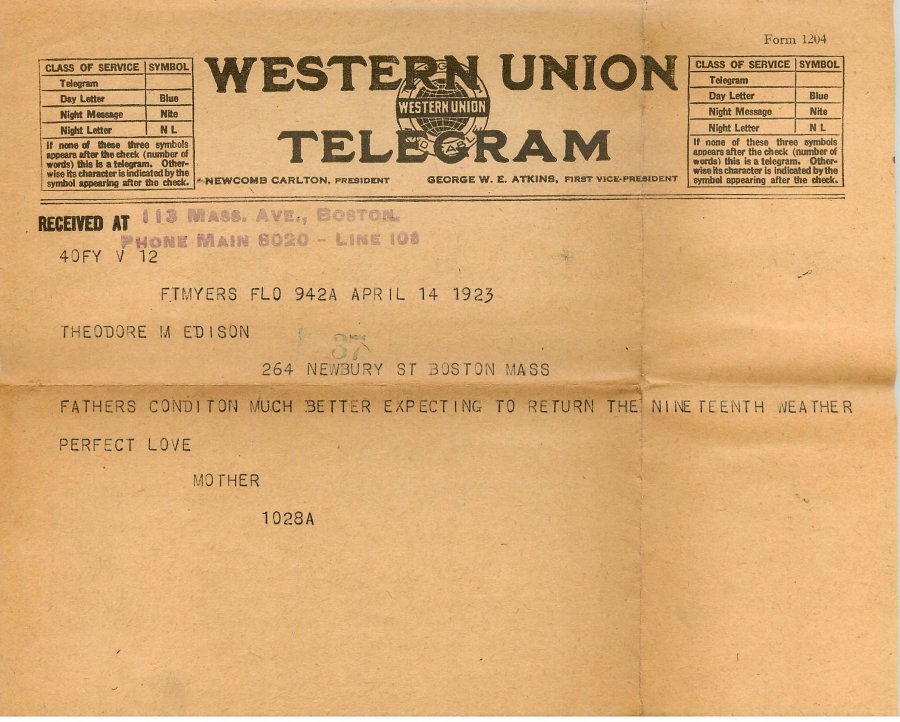 [X455LE], Telegram from Mina Miller (Mrs Thomas A.) Edison to Theodore Miller Edison, April 14th, 1923 1923-04-14
[X455LE], Telegram from Mina Miller (Mrs Thomas A.) Edison to Theodore Miller Edison, April 14th, 1923 1923-04-14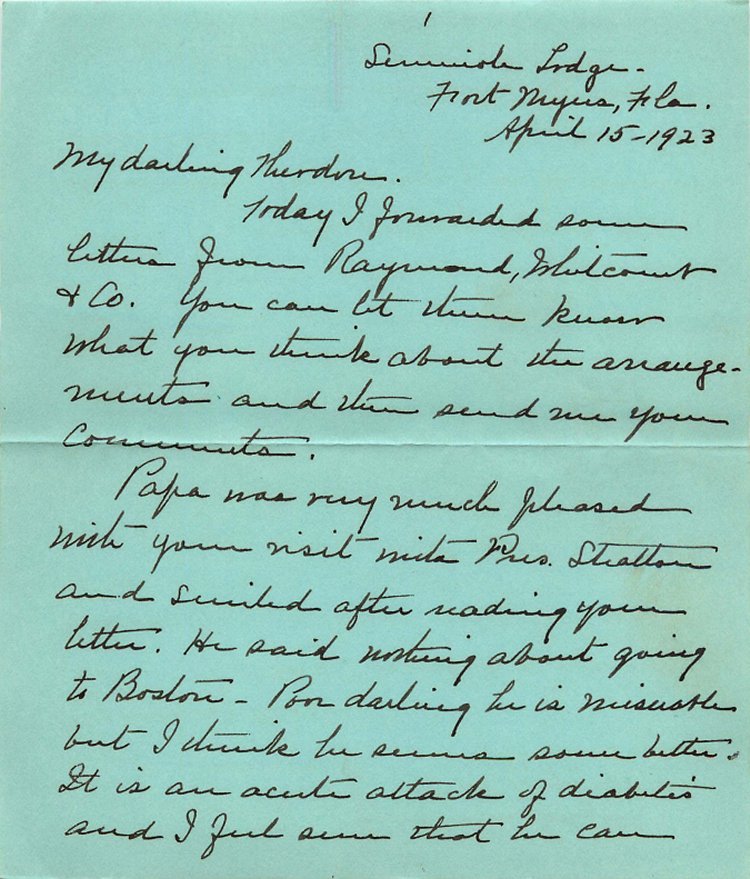 [X455LF], Letter from Mina Miller (Mrs Thomas A.) Edison to Theodore Miller Edison, April 15th, 1923 1923-04-15
[X455LF], Letter from Mina Miller (Mrs Thomas A.) Edison to Theodore Miller Edison, April 15th, 1923 1923-04-15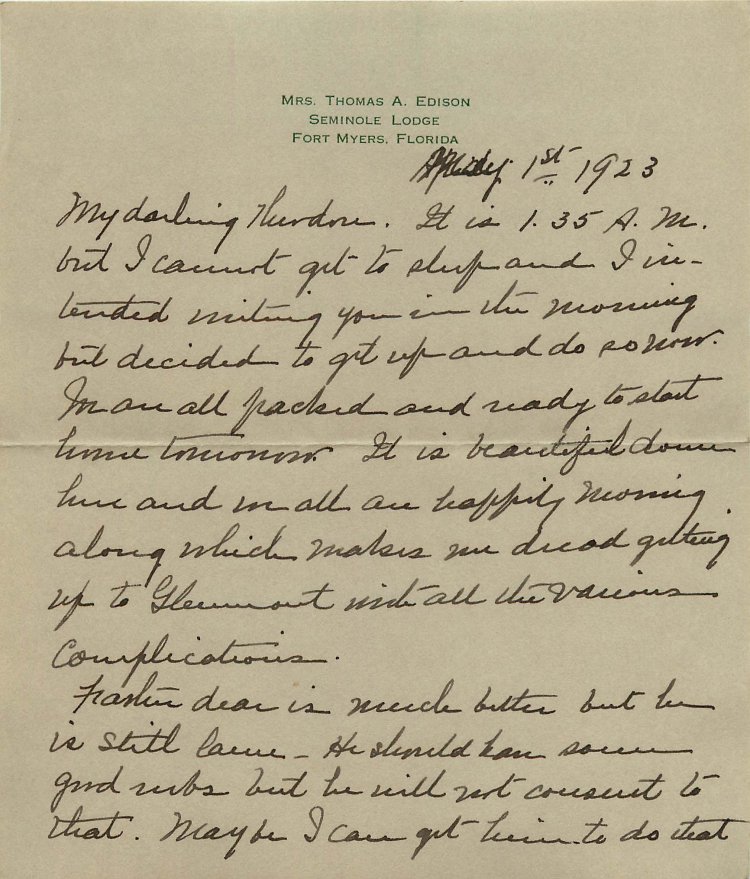 [X455LG], Letter from Mina Miller (Mrs Thomas A.) Edison to Theodore Miller Edison, May 1st, 1923 1923-05-01
[X455LG], Letter from Mina Miller (Mrs Thomas A.) Edison to Theodore Miller Edison, May 1st, 1923 1923-05-01 [X455LH], Letter from Mina Miller (Mrs Thomas A.) Edison to Theodore Miller Edison, May 6th, 1923 1923-05-06
[X455LH], Letter from Mina Miller (Mrs Thomas A.) Edison to Theodore Miller Edison, May 6th, 1923 1923-05-06 [X455LI], Letter from Mina Miller (Mrs Thomas A.) Edison to Theodore Miller Edison, May 21st, 1923 1923-05-21
[X455LI], Letter from Mina Miller (Mrs Thomas A.) Edison to Theodore Miller Edison, May 21st, 1923 1923-05-21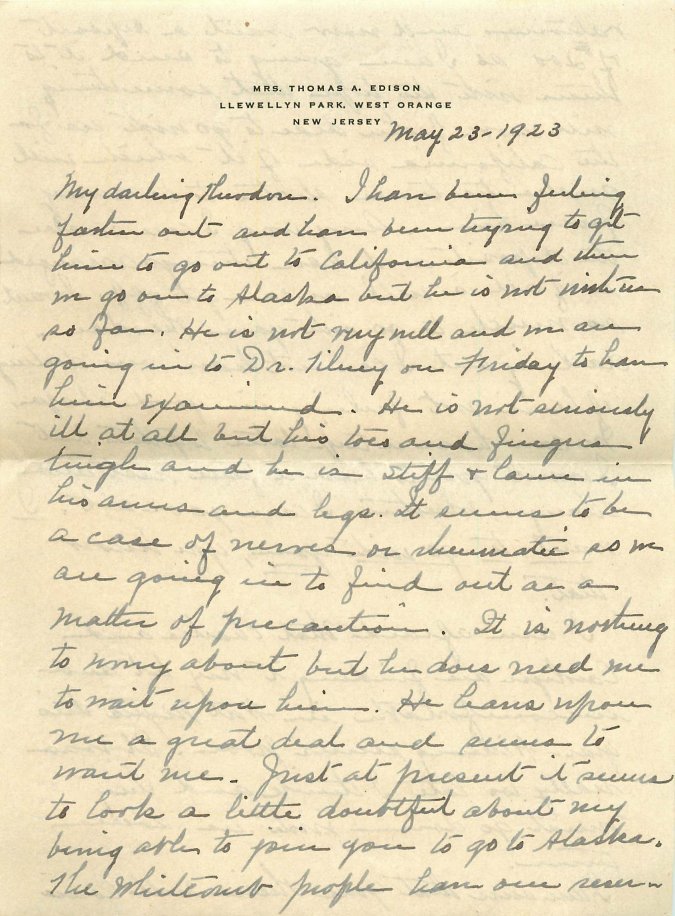 [X455LJ], Letter from Mina Miller (Mrs Thomas A.) Edison to Theodore Miller Edison, May 23rd, 1923 1923-05-23
[X455LJ], Letter from Mina Miller (Mrs Thomas A.) Edison to Theodore Miller Edison, May 23rd, 1923 1923-05-23 [X455LK], Letter from Mina Miller (Mrs Thomas A.) Edison to Theodore Miller Edison, July 9th, 1923 1923-07-09
[X455LK], Letter from Mina Miller (Mrs Thomas A.) Edison to Theodore Miller Edison, July 9th, 1923 1923-07-09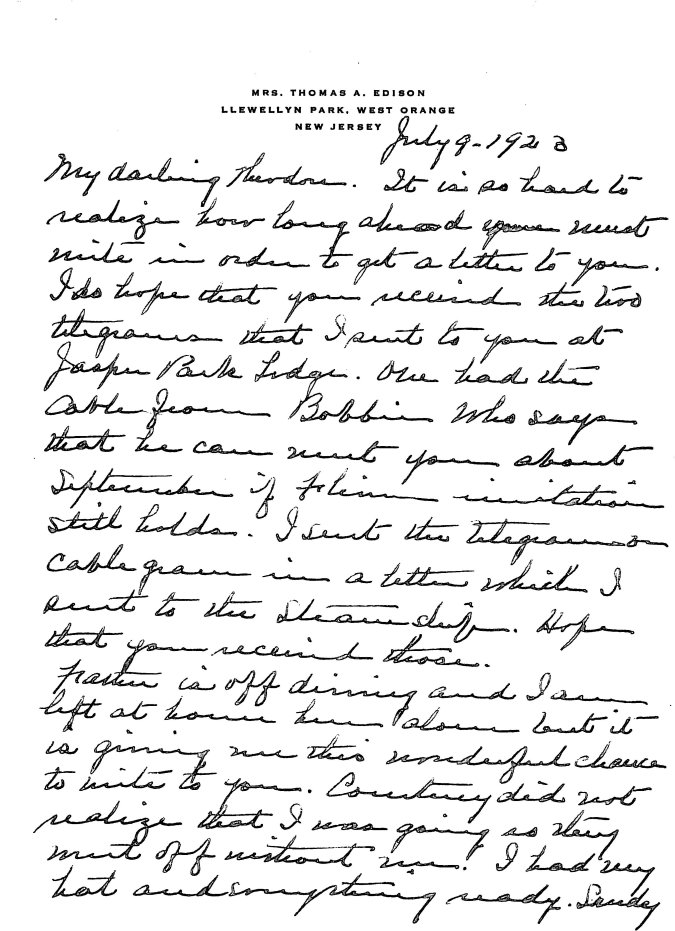 [X455LL], Letter from Mina Miller (Mrs Thomas A.) Edison to Theodore Miller Edison, July 9th, 1923 1923-07-09
[X455LL], Letter from Mina Miller (Mrs Thomas A.) Edison to Theodore Miller Edison, July 9th, 1923 1923-07-09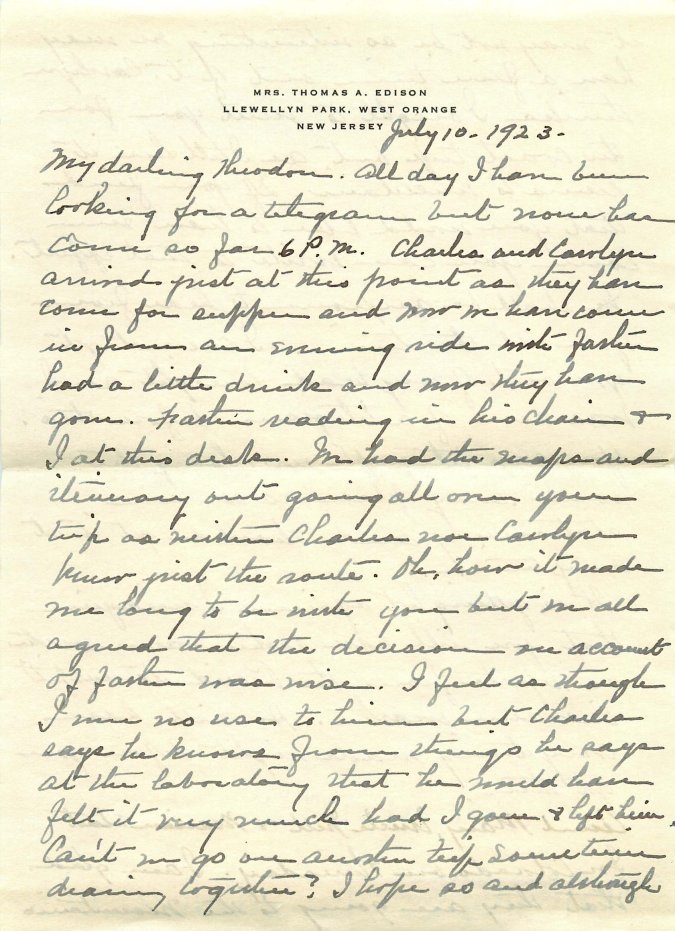 [X455LM], Letter from Mina Miller (Mrs Thomas A.) Edison to Theodore Miller Edison, July 10th, 1923 1923-07-10
[X455LM], Letter from Mina Miller (Mrs Thomas A.) Edison to Theodore Miller Edison, July 10th, 1923 1923-07-10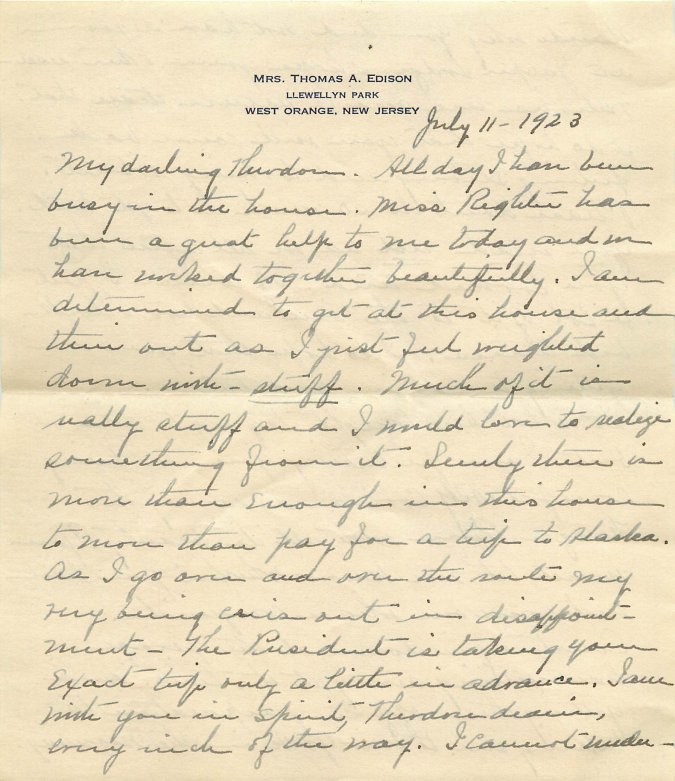 [X455LN], Letter from Mina Miller (Mrs Thomas A.) Edison to Theodore Miller Edison, July 11th, 1923 1923-07-11
[X455LN], Letter from Mina Miller (Mrs Thomas A.) Edison to Theodore Miller Edison, July 11th, 1923 1923-07-11 [X455LO], Letter from Mina Miller (Mrs Thomas A.) Edison to Theodore Miller Edison, July 12th, 1923 1923-07-12
[X455LO], Letter from Mina Miller (Mrs Thomas A.) Edison to Theodore Miller Edison, July 12th, 1923 1923-07-12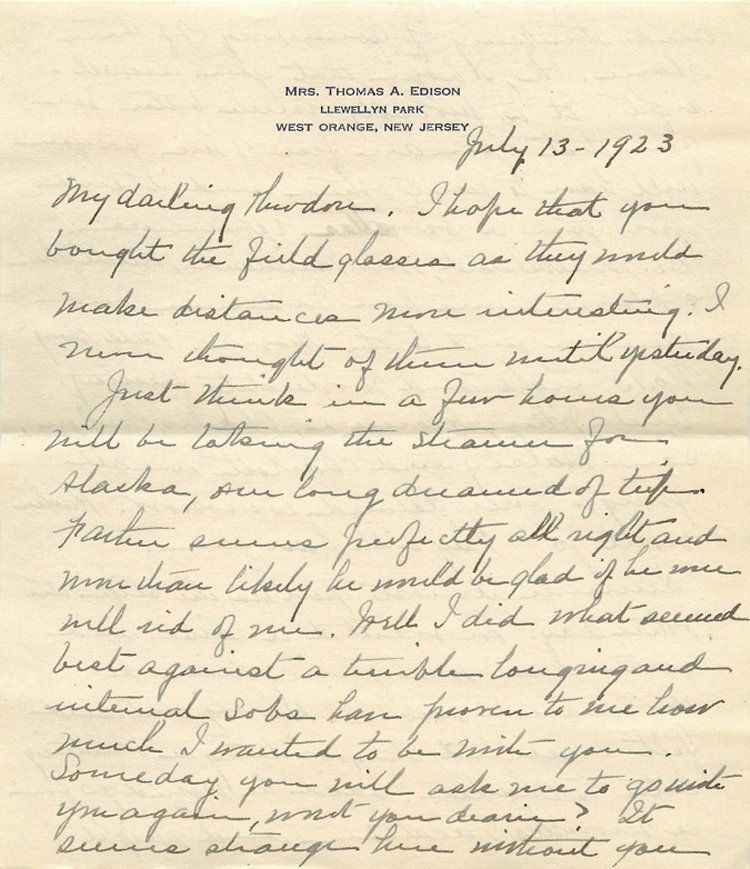 [X455LP], Letter from Mina Miller (Mrs Thomas A.) Edison to Theodore Miller Edison, July 13th, 1923 1923-07-13
[X455LP], Letter from Mina Miller (Mrs Thomas A.) Edison to Theodore Miller Edison, July 13th, 1923 1923-07-13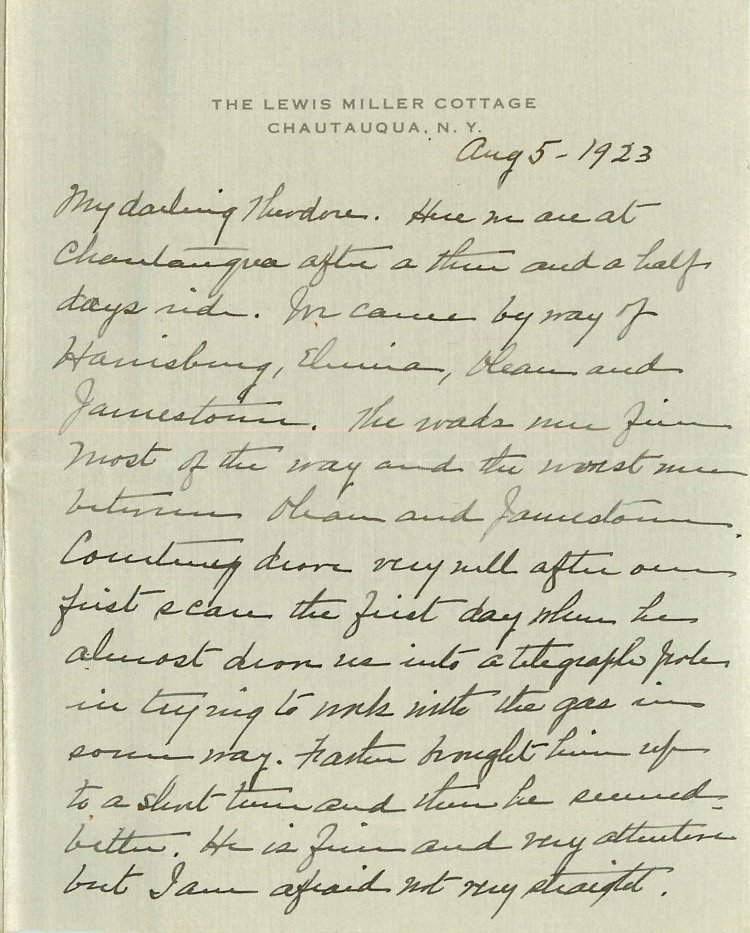 [X455LQ], Letter from Mina Miller (Mrs Thomas A.) Edison to Theodore Miller Edison, August 5th, 1923 1923-08-05
[X455LQ], Letter from Mina Miller (Mrs Thomas A.) Edison to Theodore Miller Edison, August 5th, 1923 1923-08-05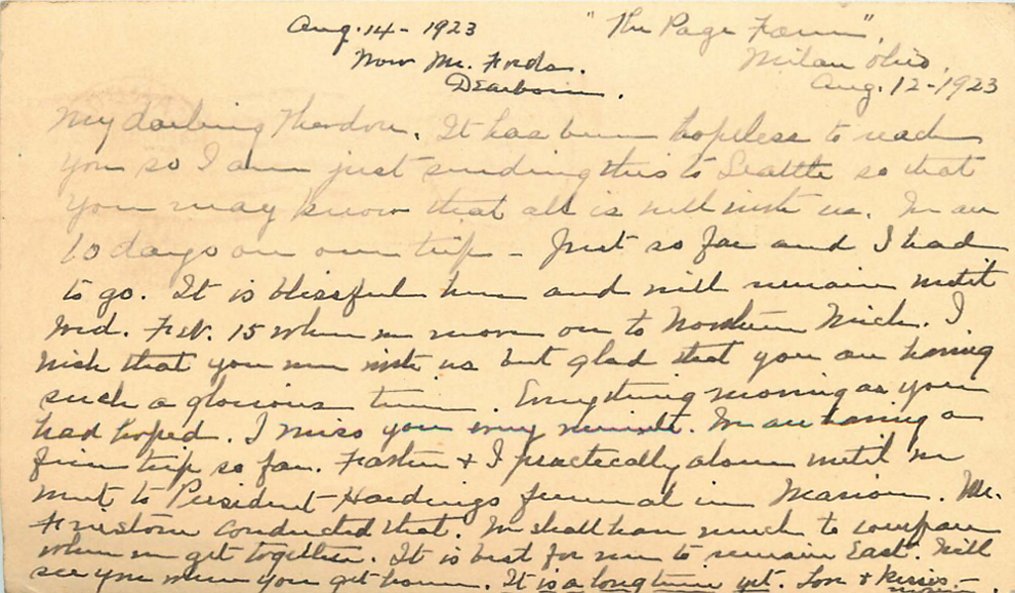 [X455LR], Letter from Mina Miller (Mrs Thomas A.) Edison to Theodore Miller Edison, August 12th, 1923 1923-08-12
[X455LR], Letter from Mina Miller (Mrs Thomas A.) Edison to Theodore Miller Edison, August 12th, 1923 1923-08-12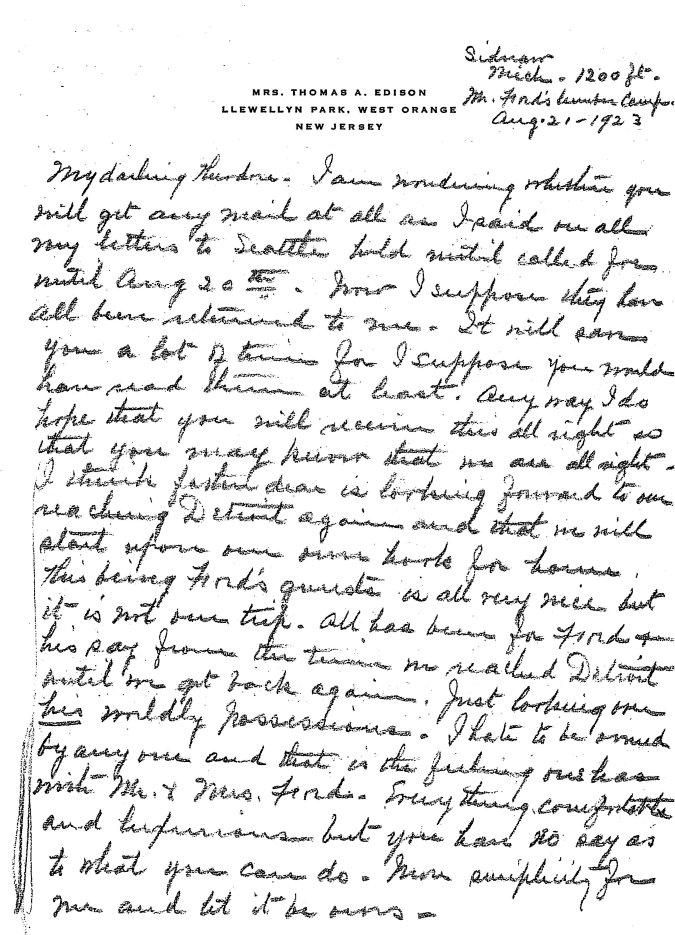 [X455LS], Letter from Mina Miller (Mrs Thomas A.) Edison to Theodore Miller Edison, August 21st, 1923 1923-08-21
[X455LS], Letter from Mina Miller (Mrs Thomas A.) Edison to Theodore Miller Edison, August 21st, 1923 1923-08-21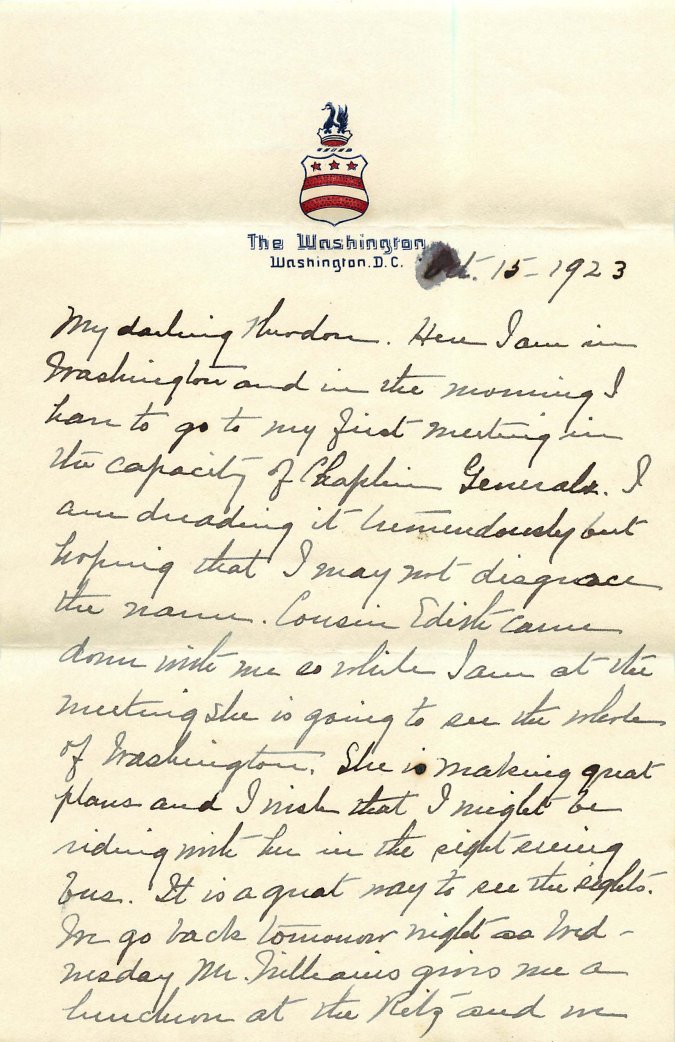 [X455LT], Letter from Mina Miller (Mrs Thomas A.) Edison to Theodore Miller Edison, October 15th, 1923 1923-10-15
[X455LT], Letter from Mina Miller (Mrs Thomas A.) Edison to Theodore Miller Edison, October 15th, 1923 1923-10-15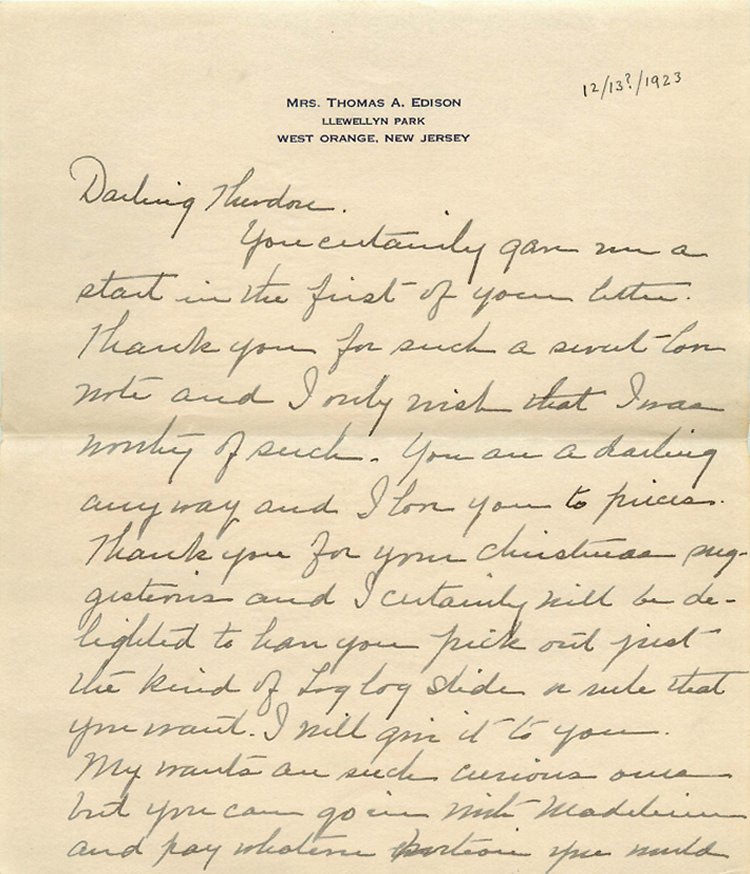 [X455LU], Letter from Mina Miller (Mrs Thomas A.) Edison to Theodore Miller Edison, December 13th, 1923 1923-12-13
[X455LU], Letter from Mina Miller (Mrs Thomas A.) Edison to Theodore Miller Edison, December 13th, 1923 1923-12-13